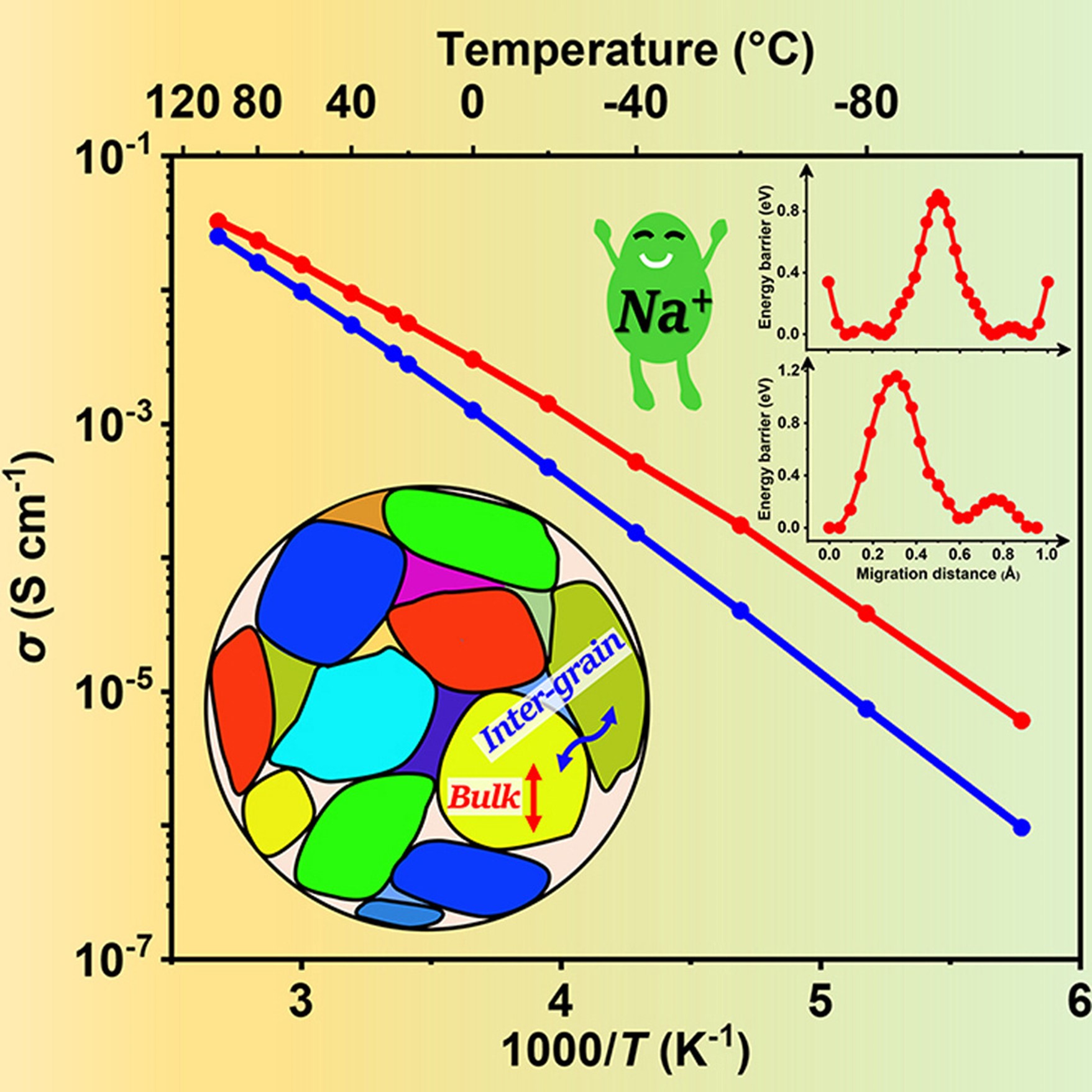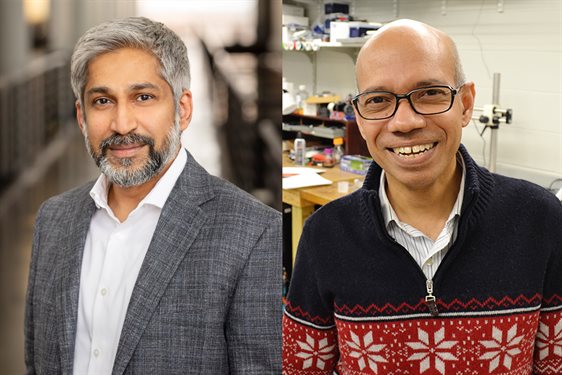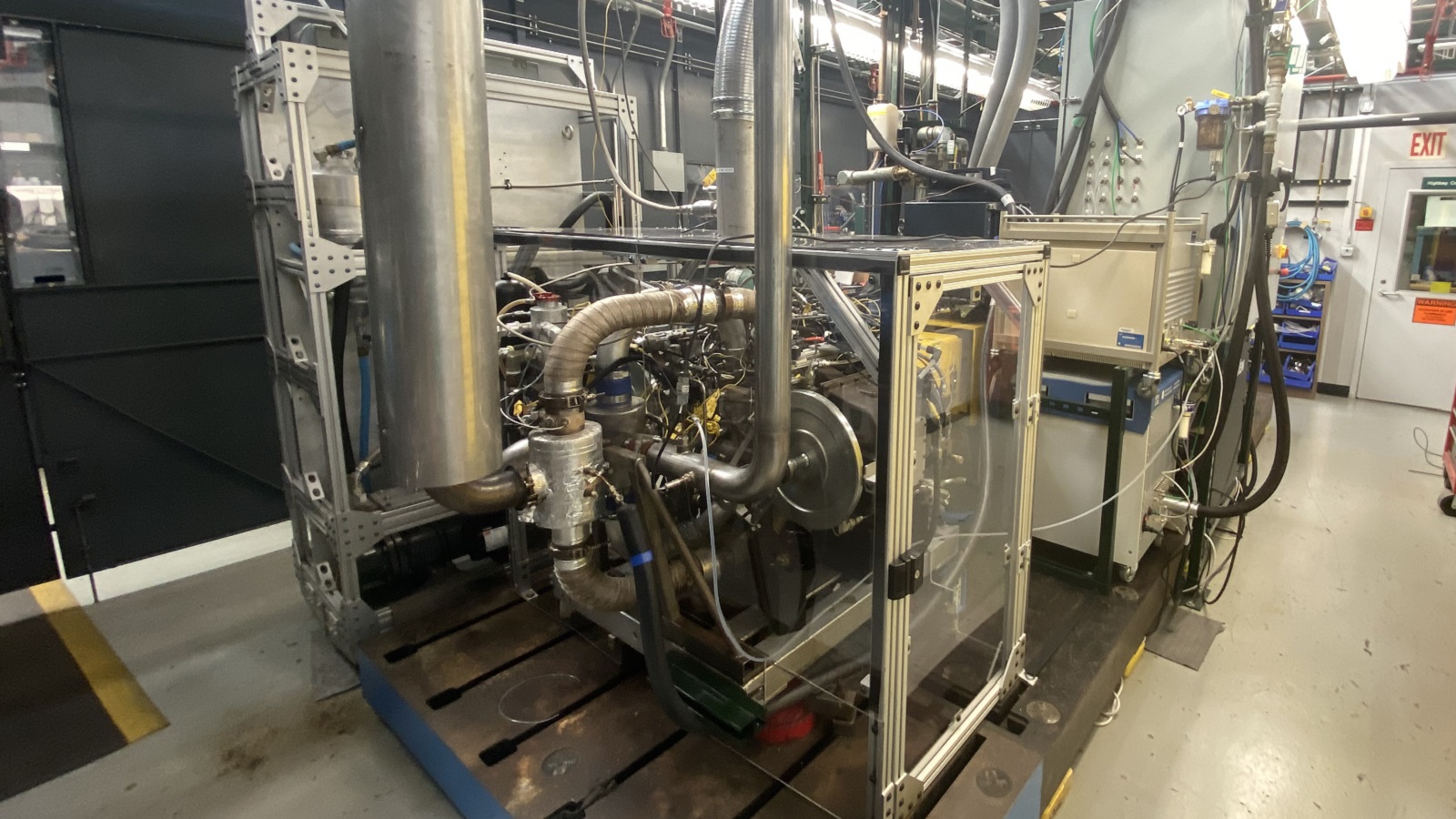Abstract Many economies, including Vietnam, have substantial potential for producing energy from agricultural waste. However, the analysis of using agricultural waste as a renewable energy source and its associated economic and environmental benefits remain unclear. This study aims to a)…
Tag: Renewable Energy
Energy storage systems for services provision in offshore wind farms
Abstract Offshore wind energy is growing continuously and already represents 12.7% of the total wind energy installed in Europe. However, due to the variable and intermittent characteristics of this source and the corresponding power production, transmission system operators are requiring…
World Nature Conservation Day: Promoting Environmental Awareness and Action
July 28 marks World Nature Conservation Day, a global initiative to raise awareness about protecting our natural environment.
Birth of a new photovoltaic module technology optimised for urban environment
Dr. Seung-il Cha’s electric conversion material R&D team in Korea and Electrotechnology Research Institute (KERI) developed a ‘New photovoltaic module technology’ can perform self-power generation for urban environment.
Potential of floating, parking, and agri photovoltaics in Germany
Abstract The innovative use of photovoltaics (PV) on parking lots, water bodies, or agricultural areas reduces land use conflicts by co-using land with renewable PV production. In contrast to conventional open-field PV, their potential role in future energy systems has…
A decision support system for assessing the barriers and policies for wind energy deployment
Abstract Addressing Africa’s energy infrastructure gap, including generation, distribution, and transmission, demands substantial investment, with a portion allocated to renewable energy technologies like wind energy. The significant scale-up of wind energy can yield substantial socioeconomic benefits for countries. However, there…
Can renewable energy prosumerism cater for sufficiency and inclusion?
Abstract By asking how renewable energy sources (RES) prosumerism, integrates sufficiency and inclusivity concerns and/or practices, the study presents the results of a narrative literature review of RES prosumerism research. The review focuses on how these concerns and/or practices emerge…
Renewable energy for women empowerment: Experiences from rural West Bengal
Abstract Unreliable supply and frequent failures of grid electricity are common in rural and disaster-prone areas in India. Furthermore, the households living below the poverty line have limited ability to pay the electricity charges regularly. Under these circumstances, access to…
Strategies toward an effective and sustainable energy transition for Cuba
Abstract This study evaluated the possibilities of energy transition in Cuba 2030. Cuba is currently in a vulnerable energy situation since it strongly depends on the importation of fossil energy. Strategies based on intermittent RES (solar and wind) can reduce…
Analyzing policy interventions to stimulate suitable energy sources for the most polluted states of India
Abstract The power sector and environment cordially affect each other throughout the economic growth journey of a developing country. It is high time to take care of the power demand, considering the environmental effects and the physical health of Indians.…
Nanoparticle applications in Algal-biorefinery for biofuel production
Abstract Rapidly depleting fossil fuel resources and rising greenhouse gas emissions have accelerated the search for cost-effective renewable energy sources. Algal feedstock has long been touted as a potential source of several biofuels because of its renewable and sustainable features.…
Micro-stories and the lived experience of transport poverty: Lessons from Iceland for just mobility transitions
Abstract Iceland features a high share of renewable energy supply but remains largely dependent on fossil fuels for transport and is relatively car dependent for mobility. In the context of a public transport system perceived by users and non-users as…
Optimizing renewable energy utilization with high gain converters
Abstract This research proposes a novel control technique for optimizing hybrid renewable energy sources (HRES) by using a high-gain DC-to-DC converter topology. The Hybrid RES system comprises a battery components, wind turbine (WT), and photovoltaic (PV). The proposed control methodology…
Market attractiveness analysis of battery energy storage systems in Indonesia, Malaysia, the Philippines, Thailand, and Vietnam
Abstract Battery energy storage systems (BESS) have emerged as a solution for mitigating the intermittent nature of solar and wind power with the rise of renewable energy. The application of BESS is essential in integrating large-scale renewable energy. Despite the…
How does digital economy development affect renewable energy innovation?
Abstract The digital economy has been remarkably fueling the sustainability of renewable energy worldwide. However, how it accelerates renewable energy development, particularly renewable energy innovation, remains unknown. Using a panel of 65 countries from 2002 to 2019, this research applies…
Optimizing renewable energy utilization with high gain converters
Abstract This research proposes a novel control technique for optimizing hybrid renewable energy sources (HRES) by using a high-gain DC-to-DC converter topology. The Hybrid RES system comprises a battery components, wind turbine (WT), and photovoltaic (PV). The proposed control methodology…
Paradigm shift in energy planning
To meet the complex requirements of future building and energy systems, Empa researcher Matthias Sulzer and Berkeley Lab researcher Michael Wetter are proposing a paradigm shift in planning of such systems: They call for a more automated and model-based planning process, as has long been common practice in the computer chip and automotive industries.
The Impact of state policies on electric vehicle adoption -A panel data analysis
Abstract Using data from fifty U.S. states between 2012 and 2020, the impacts of three types of state level policies on electric vehicles (EV) adoption are examined: 1) policies that mitigate the environmental impacts from energy production, 2) policies that…
3E analysis of a virtual hydrogen valley supported by railway-based H2 delivery for multi-transportation service
Abstract In Southern Italy, near the Mediterranean Sea, mobility services like cars, bicycles, scooters, and material-handling forklifts are frequently required in addition to multimodal local transportation services, such as trains, ferry boats, and airplanes. This research proposes an innovative concept…
The effect of time resolution on energy system simulation in case of intermittent energies
Abstract The management and integration of intermittent renewable energy sources, such as wind and solar power, require precise capacity planning due to their variable nature. This study investigated the efficacy of using hourly time resolution in energy system models, a…
Join Us at the International Conference on Sustainable Energy and Green Technology 2024 (SEGT 2024)
The Faculty of Engineering, Chulalongkorn University cordially invites you to attend the International Conference on Sustainable Energy and Green Technology 2024 (SEGT 2024). This year’s theme, ” Sustaining the Future with Green Energy and Clean Environmental Technology,” highlights our commitment to fostering sustainable solutions. The conference will be held in Bangkok, Thailand, from December 15-18, 2024.
Utah FORGE achieves crucial geothermal milestone
A major University of Utah-led geothermal research project, funded by the U.S. Department of Energy (DOE), achieved a critical breakthrough in April after hydraulically stimulating and circulating water through heated rock formations a mile and a half beneath its drill site in the Utah desert and bringing hot water to the surface.
Harnessing Green Energy from Plants Depends on Their Circadian Rhythms
Plant hydraulics drive the biological process that moves fluids from roots to plant stems and leaves, creating streaming electric potential, or voltage, in the process.
New offshore wind turbines can take away energy from existing ones
Interactions between wind turbines could reduce power output by 30% in proposed offshore wind farm areas along the East Coast, new research has found. In all, the farms could still meet 60% of the electricity demand of New England.

New Sodium-ion battery tech boosts green energy storage affordability
In significant advances for energy-storage technologies, researchers have developed high–ionic-conductivity solid-state electrolytes for sodium-ion batteries that dramatically enhances at room temperature. This breakthrough not only paves the way for more efficient and affordable energy storage solutions but also strengthens the viability of sodium-ion batteries as a sustainable alternative to traditional lithium-ion systems.

New cybersecurity center to protect grids integrated with renewables, microgrids
The U.S. Department of Energy is awarding researchers a $2.5 million grant to establish a cybersecurity center based at Iowa State University. The center will develop technology to protect power grids from cyberattacks and strengthen the grid industry’s security workforce.
Strengthening the grid’s ‘backbone’ with hydropower
Argonne’s recent research points to hydropower’s great potential to complement the variability of wind and solar power — and ultimately serve as the backbone for a clean grid.

Powering Up to Solve Challenges in Energy Storage
In 2006, battery research was practically non-existent at PNNL. Today, the lab is lauded for its battery research. How did PNNL go from a new player to a leader in state-of-the-art storage for EVs and the grid?
How Much Dam Water is Needed for Fish and Energy?
New research identifies the most important factors in successful fish passage, pointing toward new options for flexible dam operations.
Wind Power Surge: China’s Bold Leap Towards a Green Future
A recent study introduces a novel methodology for evaluating the economic viability and competitive edge of onshore wind energy against traditional power sources. This approach underscores the potential of wind power to reach grid parity, where its cost becomes comparable or lower than conventional electricity sources. The research marks a significant step in understanding the dynamics of renewable energy markets and highlights the role of wind power in China’s ambitious environmental goals.
What Will It Take for China to Reach Carbon Neutrality by 2060?
To become carbon neutral by 2060, as mandated by President Xi Jinping, China will have to build eight to 10 times more wind and solar power installations than currently exist in the country. Reaching carbon neutrality will also require major construction of transmission lines.

Haran and Saif elected to the National Academy of Engineering
Kiruba Haran, who is a professor of electrical and computer engineering and the Grainger Endowed Director’s Chair in Electric Machinery and Electromechanics, and Taher Saif, the Edward William and Jane Marr Gutgsell Professor in mechanical science and engineering, were elected to the National Academy of Engineering

Argonne, Achates Power break new ground developing hydrogen-powered engine for decarbonizing long-haul commercial vehicles
Argonne scientists demonstrate potential of opposed-piston engine powered by zero-carbon hydrogen
Media Tip: Argonne tool helps map out where to develop clean energy infrastructure
The Geospatial Energy Mapper (GEM) from the U.S. Department of Energy’s Argonne National Laboratory is an interactive online mapping tool with an extensive catalog of mapping data for energy planning.
Modeling a net-zero future: Energy experts harness simulation for global decarbonization
The Department of Energy’s Net Zero World Initiative promotes knowledge exchange and fosters global decarbonization community.
ORNL to lead new center to create sustainable chemical industry processes
The Department of Energy’s Oak Ridge National Laboratory has been selected to lead an Energy Earthshot Research Center, or EERC, focused on developing chemical processes that use sustainable methods instead of burning fossil fuels to radically reduce industrial greenhouse gas emissions to stem climate change and limit the crisis of a rapidly warming planet.

California Group Exploring Viability of a Community-Centered Direct Air Capture Hub
Researchers from Berkeley Lab are co-leading a project to explore the creation of a direct air capture facility that uses cutting-edge technologies to remove carbon dioxide from the atmosphere in California’s Southern San Joaquin Valley.
A FORCE to be reckoned with: Computer modeling for optimal energy partnerships
Integrating nuclear power into broader energy systems, including renewable energy sources and heat-intensive industries, could improve flexibility and unlock revenue streams for nuclear power producers.
Wind Forecast Improvement Project Saves Millions for Utilities
Regional wind data from around the U.S. helps improve a national weather forecasting model, which allows utility companies better plan for windy days
Tulane expert available to speak on historic offshore wind sale in the Gulf of Mexico
Tulane University’s Eric Smith, associate director of the Tulane Energy Institute at the A.B. Freeman School of Business and expert on energy markets, including the oil and gas industry and renewable segments, is available to comment on the benefits to Louisiana…

Call for Papers and Participants: The 16th Eurasia Conference on Chemical Science 2023 (EuAsC2S–16) – Frontiers in Chemical Sciences for Sustainability
The Department of Chemistry, Faculty of Science, Chulalongkorn University, together with the Chemical Society of Thailand will co-organize “the 16th Eurasia Conference on Chemical Science 2023 (EuAsC2S–16)” under the theme “Frontiers in Chemical Sciences for Sustainability”, from December 13-15, 2023 at the Berkeley Hotel Pratunam, Bangkok.
Renewable solar energy can help purify water, the environment
Using electrochemistry to separate different particles within a solution (also known as electrochemical separation) is an energy-efficient strategy for environmental and water remediation: the process of purifying contaminated water.
Harnessing the power of water: Argonne and NREL study shows the potential of pumped storage hydropower in Alaska
Scientists study the role of pumped storage hydropower in Alaska’s clean energy future.
Next-generation Flow Battery Design Sets Records
A new flow battery design achieves long life and capacity for grid energy storage from renewable fuels.
DOE Announces $72 Million For Small Business Research and Development Grants
The U.S. Department of Energy (DOE) today announced $72 million in funding for small businesses to pursue scientific, clean energy, and climate research, development, and demonstration projects. The funding will support 296 projects across 44 states and addresses multiple topic areas, such as renewable energy, nuclear energy, cybersecurity, advanced materials and manufacturing, microelectronics, and artificial intelligence. Today’s announcement underscores the Biden-Harris Administration’s deep commitment to advancing innovative climate solutions and strengthening America’s global scientific leadership, which are critical to achieving the President’s goal of a carbon-free grid by 2035 and net-zero emissions by 2050.
Unused renewable energy an option for powering NFT trade
Unused solar, wind, and hydroelectric power in the U.S. could support the exponential growth of transactions involving non-fungible tokens (NFTs), Cornell Engineering researchers have found.
Higher efficiency catalyst key to green hydrogen
The race to make the widespread use of intermittent renewable energy a reality has taken a step forward with new research by experts from the University of Adelaide who are improving the efficiency of iridium-based catalysts.
ESF Researchers Receive NSF Funding for Eco-manufacturing of Renewable Lignin-derived Products using Sustainable Energy
Researchers at the SUNY College of Environmental Science and Forestry (ESF) received a grant from the National Science Foundation (NSF) to further its research on carbon-neutral alternative sources for value-added chemicals currently sourced from petroleum and other fossil fuels.
Integrating offshore wind into China’s power grid can further carbon neutrality goals
New research published in Nature Communications develops a bottom-up model to test the capabilities of the grid to accommode renewable power variability and to design the optimal investment plans for offshore wind power.
ASU to lead new DOE Clean Energy Manufacturing Innovation Institute
The U.S. Department of Energy has selected Arizona State University to receive up to $70 million to establish a new Clean Energy Manufacturing Innovation Institute devoted to the challenge of fighting greenhouse gas emissions from industrial process heating.